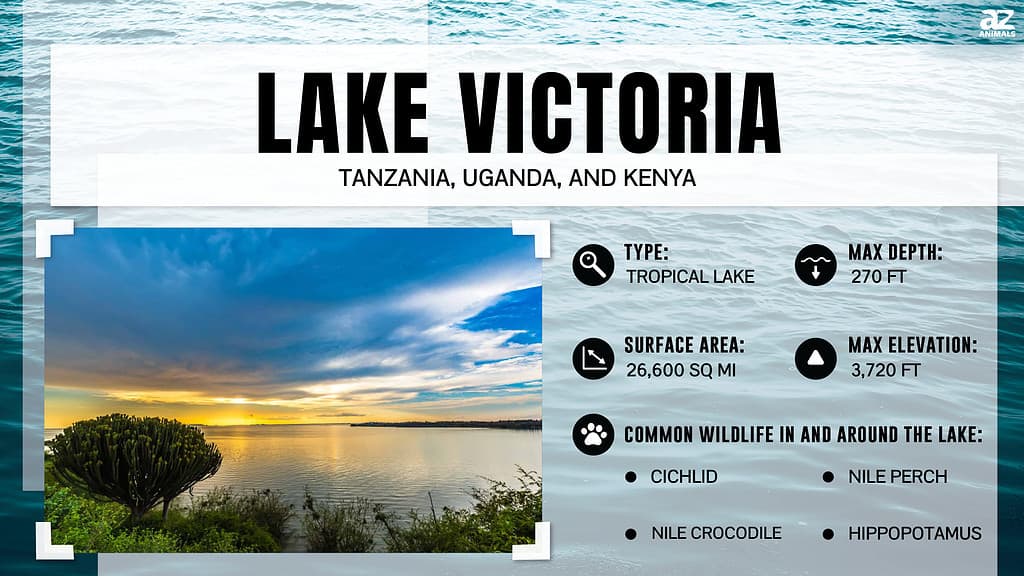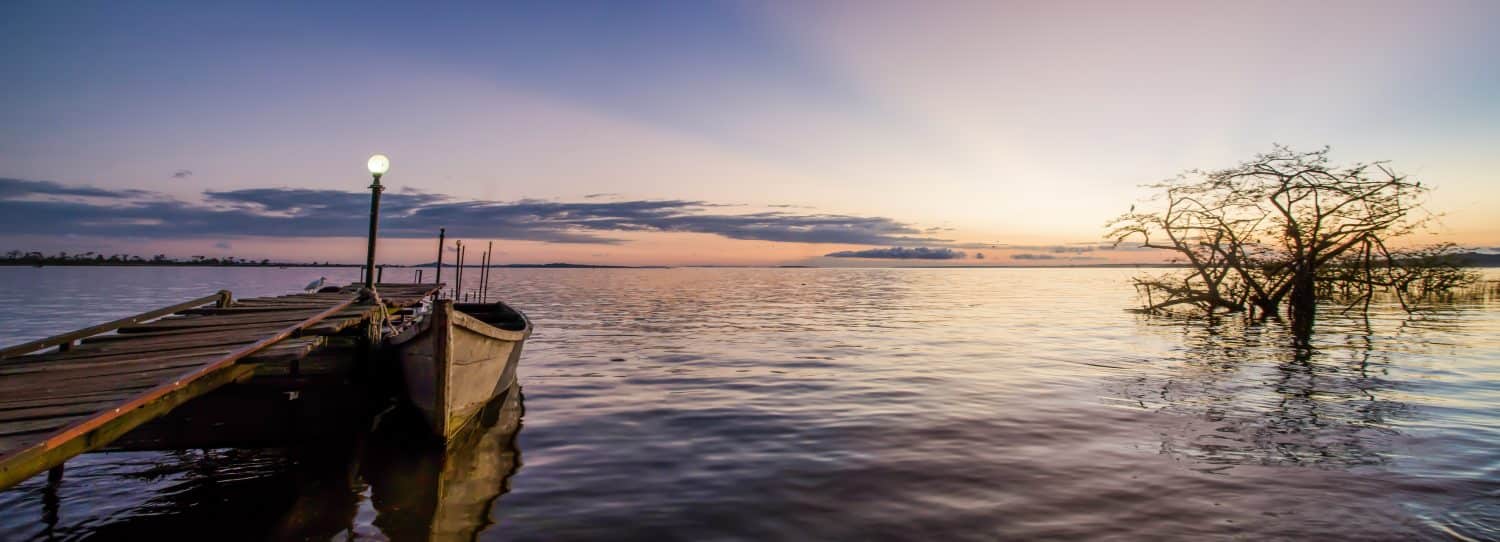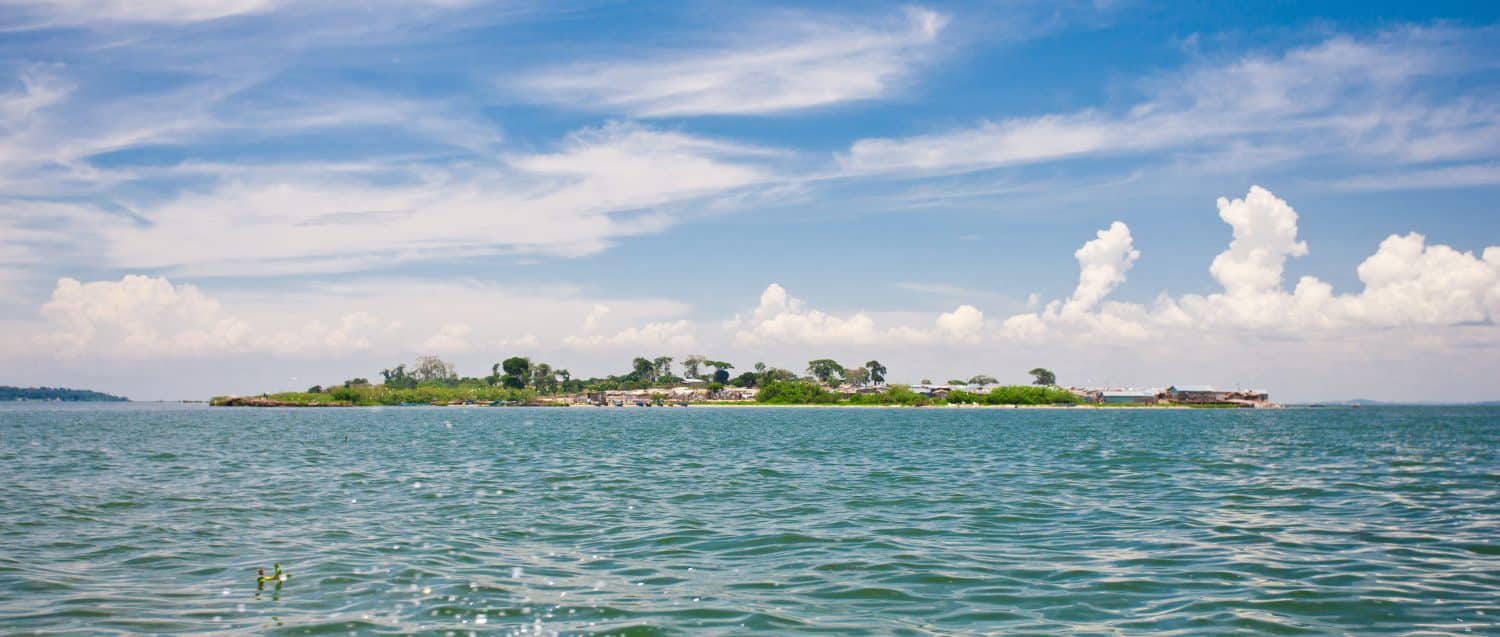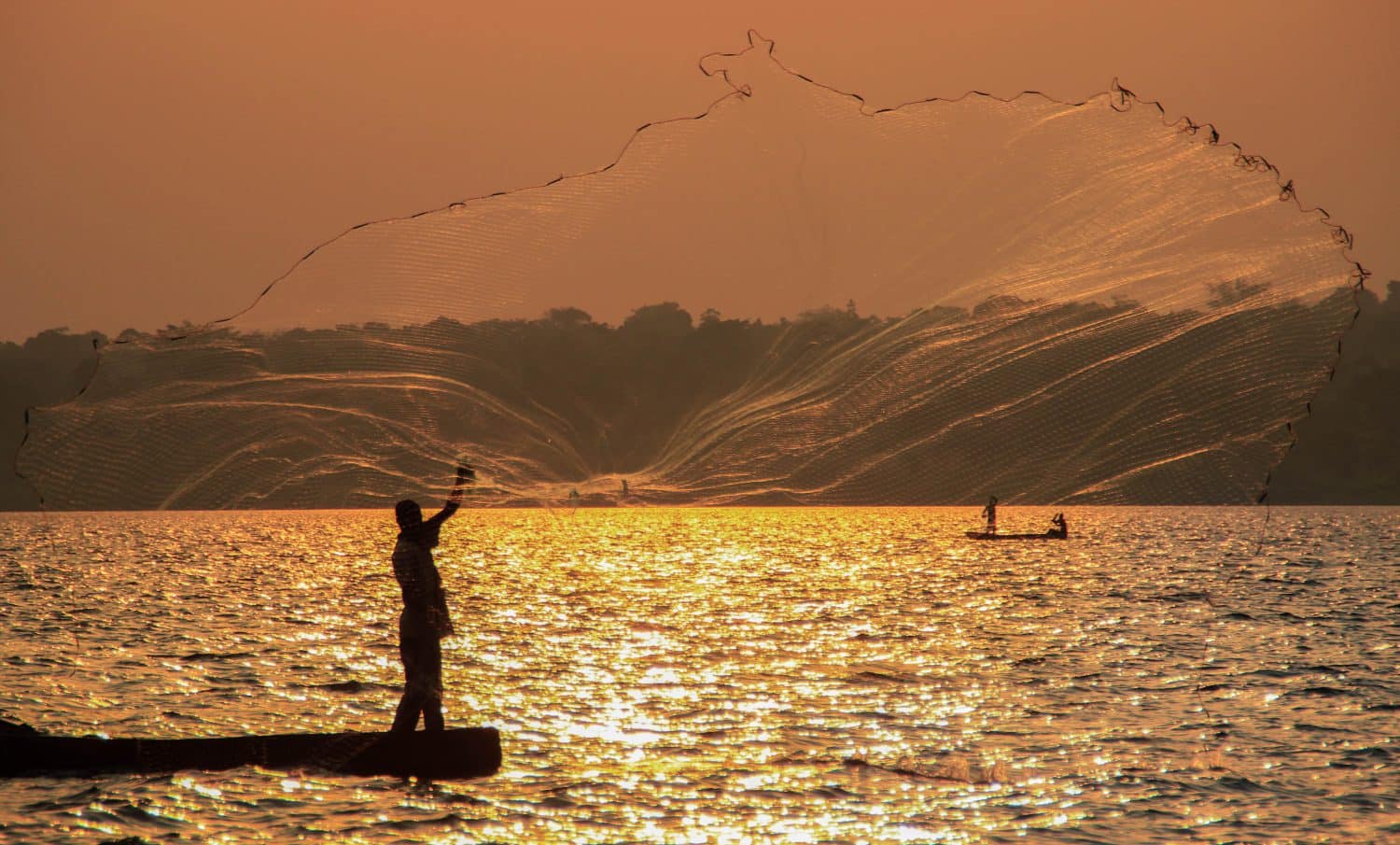Lake Victoria is the largest of the African Great Lakes, a collection of Rift Valley lakes in the region of the East African Rift. Its size can be deceptive: its surface area is enormous, but its depth in comparison might surprise you. So just how deep is Lake Victoria? Read on to discover its maximum depth, surface area, and other fascinating facts!

Where Is Lake Victoria?

Lake Victoria is one of the African Great Lakes in East
Africa
.
©Alexwilko/Shutterstock.com
Lake Victoria is a massive freshwater lake in East Africa. Parts of it lie within three countries: Tanzania (49%), Uganda (45%), and Kenya (6%). Its northern shore touches the Equator. The lake’s catchment area covers an area of approximately 74,518 mi2 (193,000 km2) and includes Rwanda and Burundi in addition to the other three countries. The Lake Victoria basin is home to approximately 40 million people.
Lake Victoria contains hundreds of islands, including 84 islands within the Ssese Islands, an archipelago on the northern side of the lake. The lake receives water from numerous rivers and streams, most critically the Kagera River on its western side. In terms of outflow, its only outlet is the White Nile River to the north near Jinja, Uganda. Most of its water – approximately 80% – comes from rainfall.
How Deep Is Lake Victoria?

Lake Victoria has an average depth of 131 feet and a maximum depth of 270 feet.
©Travel Stock/Shutterstock.com
Lake Victoria has an average depth of 131 feet (40 meters) and a maximum depth of approximately 270 feet (82 meters). The lake is somewhat longer (north to south) than wide (east to west). Its depth is surprisingly shallow compared to its sizeable surface measurements. By surface area, Lake Victoria is Africa’s largest freshwater lake and the world’s second-largest freshwater lake (after North America’s Lake Superior). It also claims the distinction of being the world’s largest tropical lake. To put it in perspective, Lake Victoria is almost as big as Ireland.
The following table lists several other notable measurements for Lake Victoria:
| Measurement Type | Size |
|---|---|
| Surface Area | 26,600 mi2 (68,800 km2) |
| Maximum Length | 209 mi (337 km) |
| Maximum Width | 149 mi (240 km) |
| Maximum Depth | 270 ft (82 m) |
| Average Depth | 131 ft (40 m) |
| Volume | 2,760 km3 (662 mi3) |
| Shore Length | >2,000 mi (3,220 km) |
| Height Above Sea Level | 3,720 ft (1,134 m) |
Animals in Lake Victoria

Lake Victoria is home to over 500 species of cichlids, most of which are endemic.
©Pavaphon Supanantananont/Shutterstock.com
Lake Victoria is home to a wide variety of wildlife, including hundreds of species of fish, many of which are unique to the lake. It contains over 500 species of cichlids alone, the vast majority of which are endemic. While the lake is home to incredible diversity, it has also seen hundreds of species go extinct since the mid-1900s. This is partly due to the intrusion of invasive fish species (noted in the list below).
Below are a few examples of fish species living in Lake Victoria, both invasive and indigenous:
- African tetra
- Airbreathing catfish
- Bagrid catfish
- Blue-spotted tilapia (invasive)
- Cichlids (over 500 species)
- Climbing gourami
- Elephant fish
- Marbled lungfish
- Nile perch (invasive)
- Redbelly tilapia (invasive)
- Redbreast tilapia (invasive)
- Spiny eel
Here are a few examples of reptiles living in and around Lake Victoria:
- African helmeted turtle
- Nile crocodile
- Variable mud turtle
- Williams’ mud turtle
Here are a few examples of mammals living in and around Lake Victoria:
Lake Victoria also has many species of crustaceans, mollusks, and spiders.
Is Lake Victoria Polluted?
Unfortunately, Lake Victoria is one of the most polluted lakes in the world. Its massive surface area means it shares its shores with three different countries, all of which contribute to its contamination. Common contaminants include domestic and industrial waste, raw sewage, chemicals like pesticides, and fertilizers.
Lake Victoria’s pollution levels directly impact millions of people who rely on its water and fish for their hydration, food, and livelihood. Because the lake is so contaminated, drinking its unpurified water as well as swimming and bathing are not recommended. Water-related diseases include malaria, bilharzia, and cholera.
History of Lake Victoria

Lake Victoria was first formed approximately 400,000 years ago and currently supports millions of people.
©Tatsiana Hendzel/Shutterstock.com
Lake Victoria first appeared approximately 400,000 years ago, making it relatively young in geological terms. Originally, a crustal block dammed westward-flowing rivers to create the shallow lake we know today. However, at one point in its history, Lake Victoria may have been several smaller lakes. It has also dried up completely at least three times.
Native Africans have a long history of living and working on the shores of the lake, but the first recorded references to the lake came from Arab inland traders. However, the first European sighting occurred in 1858 while explorers were searching for the source of the Nile River. British explorer John Hanning Speke discovered the lake and named it after Queen Victoria. Despite this, the Arabs already knew the lake as Ukerewe; other local names include ‘Nnalubaale, Nalubaale, Nyanza, and Nam Lolwe.
In 1952, engineers constructed the Nalubaale Dam on the Victoria Nile to control water flow to the Nile River. By 2000, the Uganda government had begun to expand the dam, adding the Kiira Hydroelectric Power Station. Water levels had dropped suspiciously low by the end of 2005, resulting in a dispute over water appropriation.
The photo featured at the top of this post is © Stefan Haider/Shutterstock.com
Thank you for reading! Have some feedback for us? Contact the AZ Animals editorial team.






